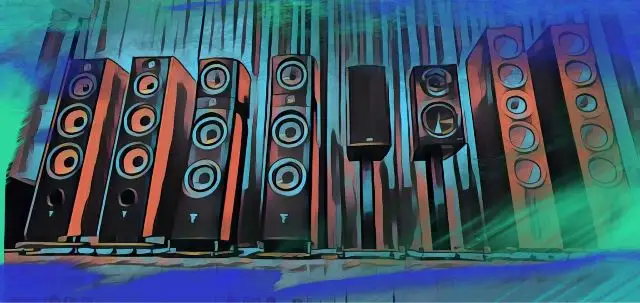The world we live in is wired for sound. Unless you live on the top of a mountain (lucky you) the chances are you experience sound coming from a slew of different speakers as you go about your day.
Cell phones. Televisions. Elevators. The Bluetooth speaker on the subway blasting sh*t you don't want to hear.
And perhaps most importantly for us musicians, speakers allow us to hear our work in pristine detail.
But how do speakers work exactly? Even if you're not curious about how the sound sausage is made, it's a good idea to have a basic understanding of speaker technology if you're planning on spending your life in a studio.
Basics of Sound
Before we look at speakers, let's take a brief refresher on how sound itself works.
Sound is essentially mechanical energy in the form of waves that move through a medium - be it air, liquid, or solid.
This movement causes localized changes in pressure according to the shape of the waveform, much like the ripples created when you drop a pebble (or your phone) into water.
In the image below you'll see a 1kHz sine wave. See how there's an increase, followed by a decrease, in the sound pressure level relative to the ambient pressure? That's sound in motion.
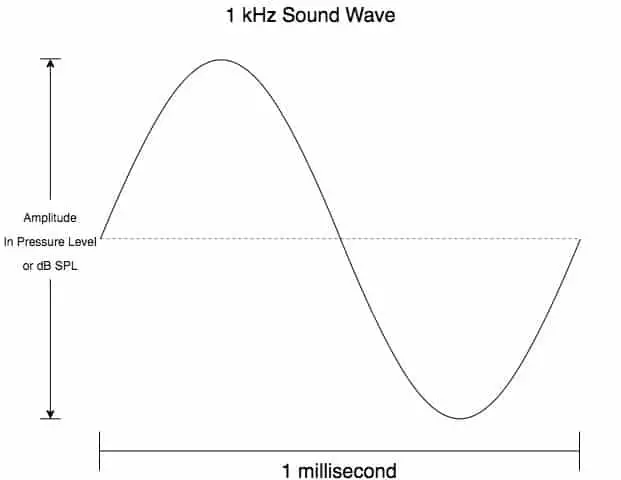
Inside our ears thousands of tiny hair cells respond to these changes of pressure, converting them to an electrical signal that our brains can interpret as Nickelback. Or whatever.
An analog audio signal is sound in the form of electrical energy, represented as a voltage waveform. Here's the same sound wave represented as an electrical signal:
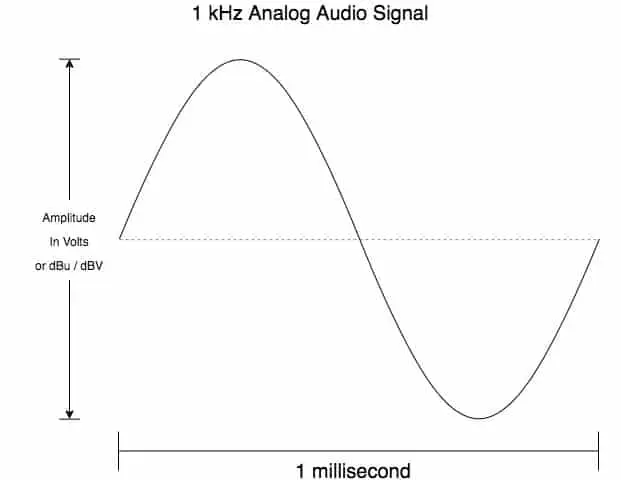
Digital audio is a depiction of a stored analog signal in binary format.
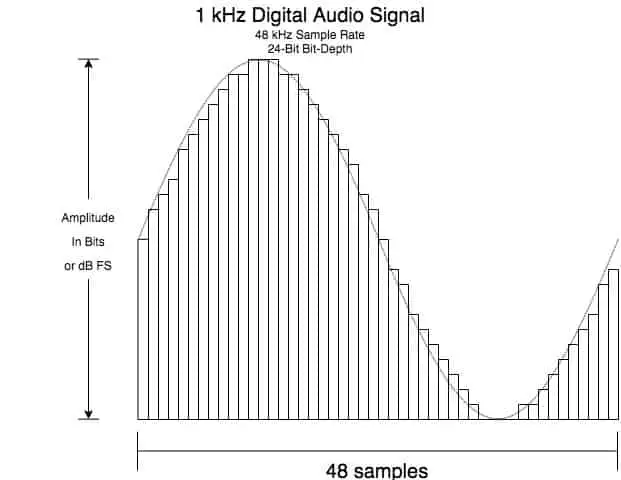
An audio signal, whether it's analog or digital, needs to be converted back into a sound wave (mechanical energy) for our ears to make sense of it.
Enter the speaker.
How Speakers Work: The Basics
Before we get in to the nitty gritty of speaker components and how they function, let's take quick overview of what a speaker does to recreate sound.
An amplified audio signal is sent to a metal coil of wire. This coil reacts to the electric current flowing through it, interacting with a magnet inside the speaker, and causes a diaphragm to vibrate.
The diaphragm moves air, creating sound waves that are an exact copy of the original audio signal. Et voila! You can hear your ma talking to you from the other side of the country.
Obviously that's a wild oversimplification. But now we know the Cliffs Notes version of how speakers do their business, let's break things down.
What's Inside A Speaker?
Let's take a look at all the speaker parts that create the magic...
The Speaker Driver
The speaker driver is responsible for converting the electrical signal into sound waves. It's the engine that powers the speaker's sound reproduction.
From the inside out the components that make up a speaker are:
- Pole
- Rear plate
- Magnet
- Top plate
- Voice coil
- Basket
- Spider
- Cone and surround
- Dust Cap
Pole, rear, and top plate
The pole piece in a speaker is like a conductor's baton, keeping the orchestra of sound that's flowing through the speaker in sync. It's the central axis around which the whole magnetic system is based.
The rear plate sits behind the pole, and not surprisingly the top plate sits above.
Magnet
The permanent magnet is surrounded by the pole and plates to focus its magnetic field, and is attached to the speaker basket.
It's referred to as a permanent magnet because it's always a magnet.
The voice coil on the other hand only becomes a magnet (or to be precise an electromagnet) when it's fed an electrical current.
Voice Coil
The voice coil is a wire tightly coiled around a tiny cylinder, sometimes called a bobbin. It kind of looks like a yo-yo.
When an electrical signal runs through the coil it becomes an electromagnet, interacting with the permanent magnet.
If you remember your science lessons you'll recall that like forces repel, and opposite ones attract. This interplay of magnetic forces creates the movement that pushes the coil around and ultimately creates sound waves.
Spider and surround
The spider is a corrugated piece of material that supports the voice coil. It holds the coil in place while allowing it to move back and forth freely.
While this sounds like a contradiction, it's not. The spiders main role is to allow the voice coil to move in only one direction; namely up and down. Without the spider the voice coil would be gadding about willy nilly within the speaker housing.
The surround performs a similar function to the spider except that it holds the cone in place at the top of the basket.
The cone
Also known as the diaphragm, the speaker cone is one of the few bits you can see on a speaker.
The cone moves back and forth in response to the magnetic pulses from the voice coil. The movement of the cone creates pressure waves in the air surrounding it, creating the sounds you hear.
Dust cap
This little fella stops any wayward dust and dirtparticles from entering the speaker assembly and messing things up.
Basket
Is just a fancy term for the housing that holds all the speaker parts together. It does actually look a bit like a basket.
So this is everything that makes up an actual speaker. But in everyday language when we talk about speakers we mean the whole shebang.
So what else is needed to make speakers work?
Electrical Components
To get the voice coil pumping with your jam you need to send it an electrical signal. This is done with speaker terminals and a braided wire.
The terminals are metal tabs or connecting ports that connect an audio cable to the speaker.
Connected to these terminals is the braided wire which is attached to the voice coil, giving it the fuel it needs.
Housing
A speaker needs a housing enclosure, often referred to as a cabinet, to work properly for several reasons.
Firstly it provides a sealed environment to protect the various gubbins that make up the driver from things like dust, dirt, and dog hair.
Secondly it mitigates phase cancellation. As a speaker diaphragm moves, it creates sound waves in both directions. Without the housing these waves would cancel each other out.
Finally, the enclosure influences how sound is distributed. Sound can be directed in a specific direction, and low frequencies can be tuned properly.
The housing enclosure is made of a thick material that isn't very flexible. Wood or medium density MDF is common although plastic is also used.
Amplification
All this is well and good, but a speaker on it's own isn't going to kick out anything useful.
While speakers comes in a variety of shapes and sizes, they all share the same requirement: an audio signal stronger than the line level signal sent out by playback devices, such as a TV or audio interface .
A power amplifier is used to boost the signal from line level to speaker level. Depending on your speakers this may be an external unit, or built in to the speaker housing itself.
Active Loudspeakers
Active speakers have an amplifier built in The Yamaha HS5 are popular active speakers for studio monitoring.
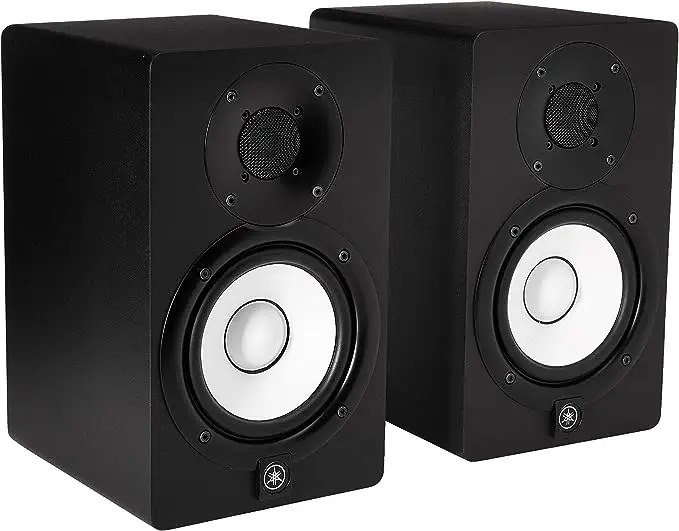
Passive Loudspeakers
Passive speakers require an external power amplifier to generate sound waves from the audio signal.
The JBL PRX412 is a sturdy example of a passive loudspeaker that requires an external power amplifier to give it enough noise juice.
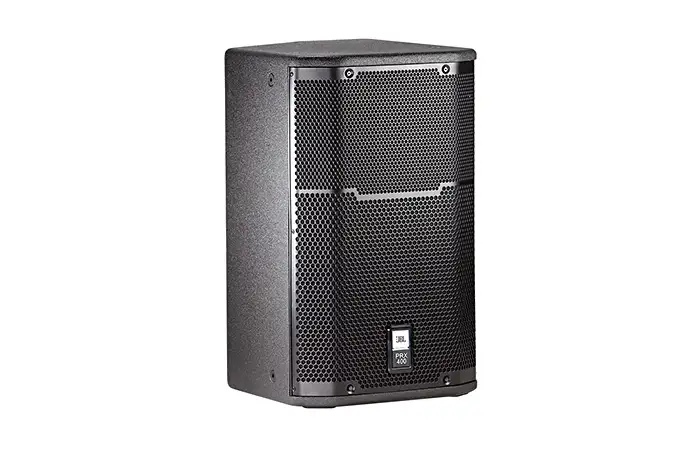
How Do Speakers Producer Different Frequencies?

So far we've looked at how speakers turn electrical energy (a signal) into pressure waves in the air, and thus into sound.
But not all frequencies are created equal, and a single speaker trying to cover all bases (pardon the pun) will be a poor one indeed.
That's why you'll see massive stacks of loudspeakers at gigs. Some cover the bass frequencies (the sub-woofers and woofers), some the mid range, and the little tweeters take care of all the high frequency ranges.
These speakers are all built differently, to handle the different frequencies they look after.
But not everyone wants a giant stack of loudspeakers in their studio (or living room), not to mention the clutter of power amps and crossovers.
Enter the multi-driver speaker.
Multi-Driver Speakers
Multi-driver speakers use 2, 3, or even 4 drivers of varying sizes to handle different frequencies. The most common of these is the dual driver speaker, sometimes referred to as a 2-way speaker.
Inside a 2-way speaker cabinet is a crossover which sends all the high frequencies to the tweeter, and the mid range and low frequency range to the woofer, by way of a high pass and low pass filter.
Using a crossover in this way means the speaker produces a full range of frequency output, while maintaining a sound quality that a single driver alone couldn't achieve.
If you're making music in your home studio the chances are you'll be using a 2-way speaker for monitoring, like the Yamaha HS5 mentioned above, or the KRK Rokit 5 G4, pictured below.
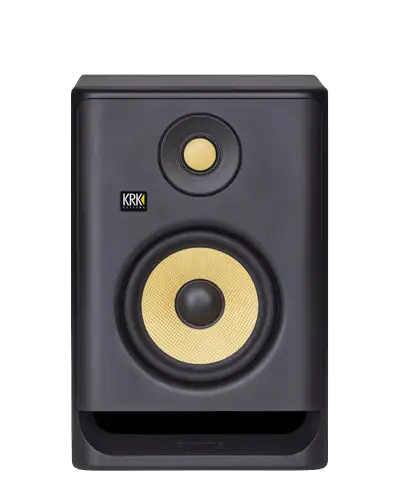
Dual driver speakers are fine for recording and mixing in your own studio. But when it comes to mastering (whether you use an online service like eMastered , or farm it out to an actual person) you'll want a bit more detail, so 3 or 4 way speakers will serve you better.
The same goes for commercial recording studios. They may use a pair of powered monitor speakers for recording and monitoring, but when it comes to mixdown they'll turn on the bad boys.
What Is Speaker Impedance?
Speaker impedance is essentially a way of measuring the total resistance of the flow of electrical current in the speaker.
Measured in ohms, the impedance comes from both the resistance from the voice coil wire, and the inductance caused by winding that wire into a coil. Inductance is different from resistance because it changes with frequency - called inductive reactance.
Because of this variable, impedance is different from 'normal' resistance, and is calculated using a complicated formula that musicians shouldn't ever have to understand.
Instead, know that it's important to match the impedance of your speakers and amplifier. Mismatched impedance can result in reduced audio quality, overheating, and in extreme cases damage to the equipment.
Remember kids, always pair your speakers with compatible amplifiers.
Speaker Power Versus Speaker Sensitivity
Bigger equals better right?
Not always. Most folks when they're comparing speakers attribute a higher power rating (in watts) to a higher volume. But in practice are you going to be able to make full use of that wattage?
A better way to compare speakers is by looking at speaker sensitivity. This is measured in decibels and quantifies how effectively a speaker converts electric power into sound.
A higher sensitivity rating means that a speaker can produce more sound for a given amount of power. In other words, it's more efficient at converting electricity into sound waves.
Measuring speaker sensitivity levels the playing field when it comes to comparing the efficiency and output of speakers.
However, it still is important to take into consideration a speakers ability to handle power if you're using an external amp. The measurement represents how much electrical power the speaker can handle without getting damaged, so it's important to make sure the amp has an output power rating that's equal to the speaker.
Whether you choose high or low sensitivity speakers depends on the requirements of your setup. If power efficiency is important (for example in portable speakers, or car stereo systems) high sensitivity is best, whereas in a professional audio set up you may want speakers with a higher power capacity
Frequency Response
When we talk about the frequency response of a speaker we're talking about it's ability to reproduce sound across a range of frequencies.
No speaker is perfect so a frequency response graph helps us see where there may be peaks or troughs in frequencies where it accentuates or underperforms.
There's a couple of reasons why the frequency response of a particular speaker, or speakers, is important.
Firstly it helps when designing a multi-speaker system and where to set the crossovers.
Secondly, it helps when choosing the best speakers for the particular audio job you have in mind.
While many consumer-grade speakers to have a slight 'smile' in their frequency response to sweeten the audio, as a music producer you want a pair of speakers with a flat frequency response.
This way no instruments or samples will get masked by a dip in frequencies produced, or sound louder than they truly are due to a peak in the graph.
Essentially a flat frequency response in speakers will ensure that everything you hear is as close to the real thing as possible.
What About Headphones?
Headphones use the same speaker driver technology as loudspeakers. They are in fact tiny little speakers that sit over (or in) your ears.
How Do Stereo Speakers Work?
A single speaker (generally) transmits sound in mono. To get a stereo sound field you need two mono speakers feeding off the left and right audio signal respectively, placed appropriately.
But have you ever looked at a soundbar and wondered how the stereo field is created?

Single speaker units designed to produce a stereo image have multiple drivers positioned throughout the unit.
The stereo signal is split into left and right channels and is sent in varying amounts to each driver to get a full stereo image.
Speakers like these tend to come with an additional speaker - a subwoofer - to handle low frequencies, and Batman's voice.
Who Invented The Speaker?
As with many inventions around the turn of the 20th century, it's hard to pinpoint exactly who invented the loudspeaker. It emerged over time as scientists and inventors began to understand more about sound waves and electric current.
Alexander Graham Bell (he of telephone invention fame) made significant contributions to sound related technologies, including developing an early version of the loudspeaker late in the 19th century.
Right at the end of that century Oliver Lodge came up with the first moving coil loudspeaker. Then, in 1915 Danish engineer Peter L. Jensen and Edward Pridham received a patent for their invention of an electrodynamic speaker design using a coil of wire attached to a diaphragm placed in a magnetic field.
On the other side of the pond, in 1925, Edward W. Kellogg and Chester W. Rice designed a dynamic speaker with a cone which was eventually licensed to RCA. This design included many aspects that are considered the basis for modern loudspeaker technology.
It takes a village and all that. Suffice to say that lots of cone heads put in countless head-scratching hours to ensure that you can enjoy Nickelback concerts at full fidelity today.
The Future Of Speakers

Technology keeps getting smaller and cheaper. We all know that. But when it comes to speakers the basics behind the technology haven't changed much since they were invented.
In fact speakers are one of the most inefficient technologies we use today. Over 99% of the energy that goes into the speaker generates something other than sound. Most of it gets turned into heat.
It's kind of surprising the EPA hasn't banned the use of speakers due to their poor energy performance.
But thanks to a new material discovered in 2004 speakers of the future could be different.
Graphene is an extremely light material, meaning it needs much less energy to move back and forth to create a pressure wave. Excellent news if you're a tweeter.
If scientists can figure out how to successfully implement large scale production of Graphene, and integrate it into commercial applications, speakers of the future could be lighter and much more energy efficient.
Until that day we're stuck with mini-heaters that create changes in air pressure due to electrical signals, aka the speaker.
Now go forth, and listeneth to the music!


